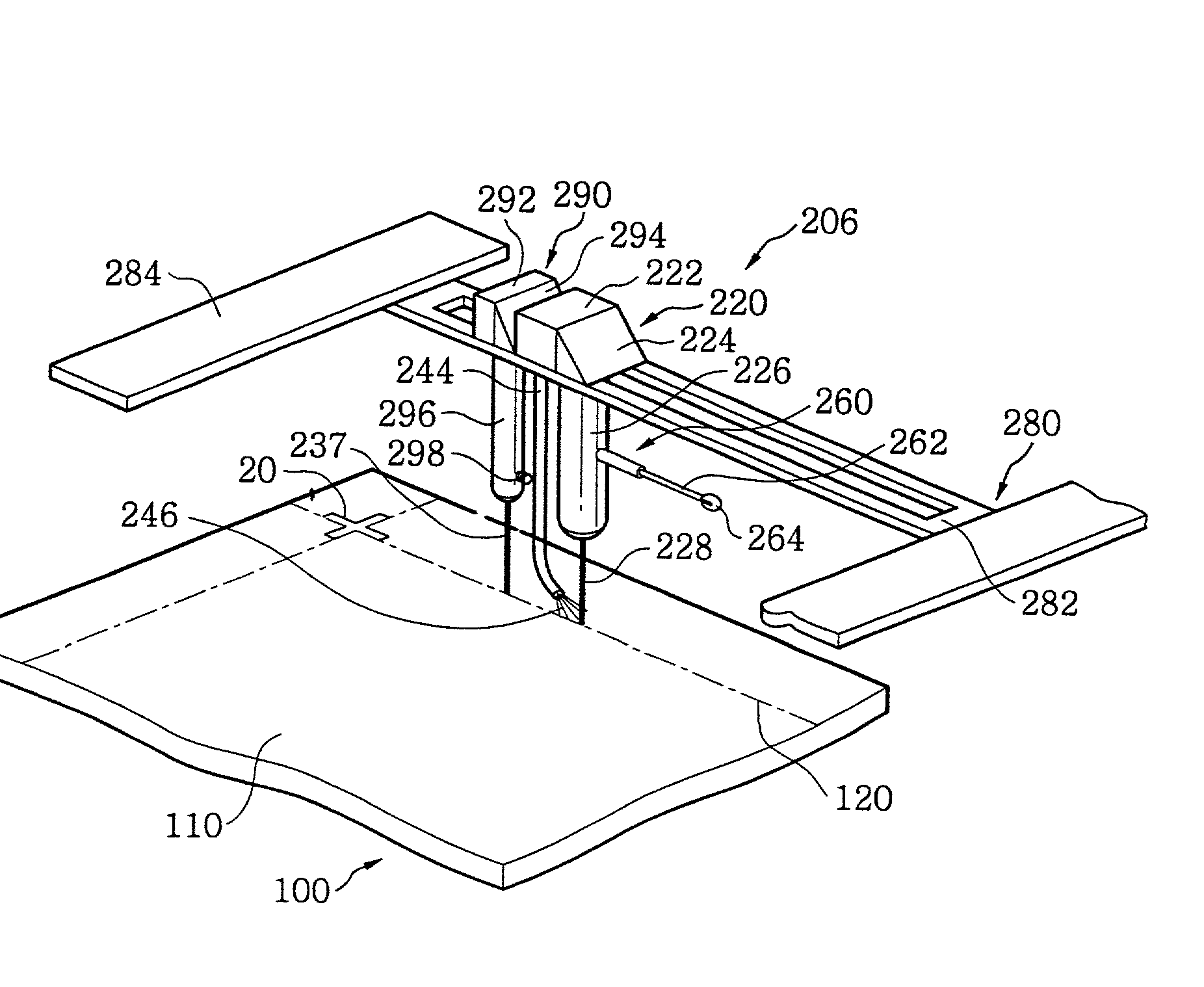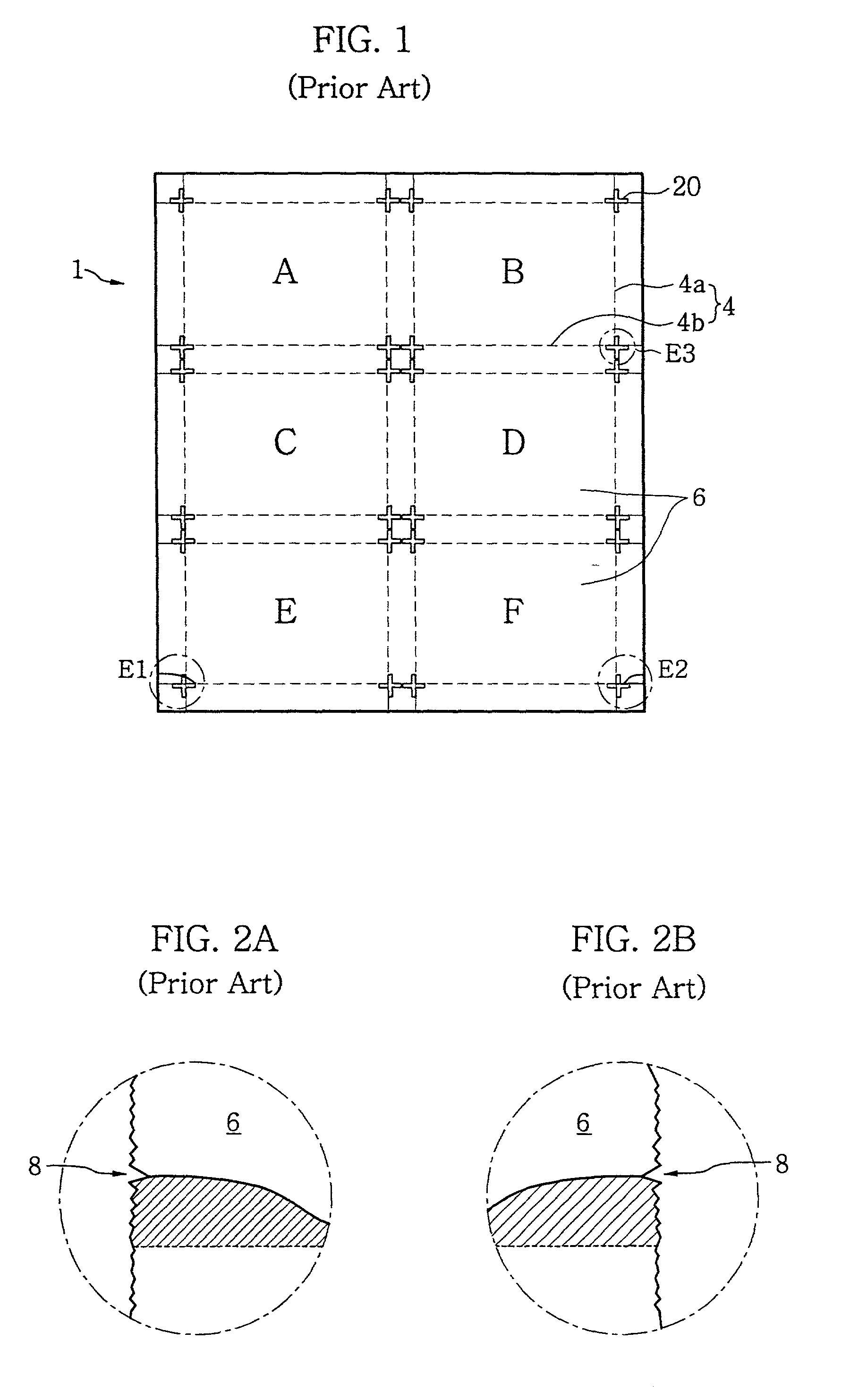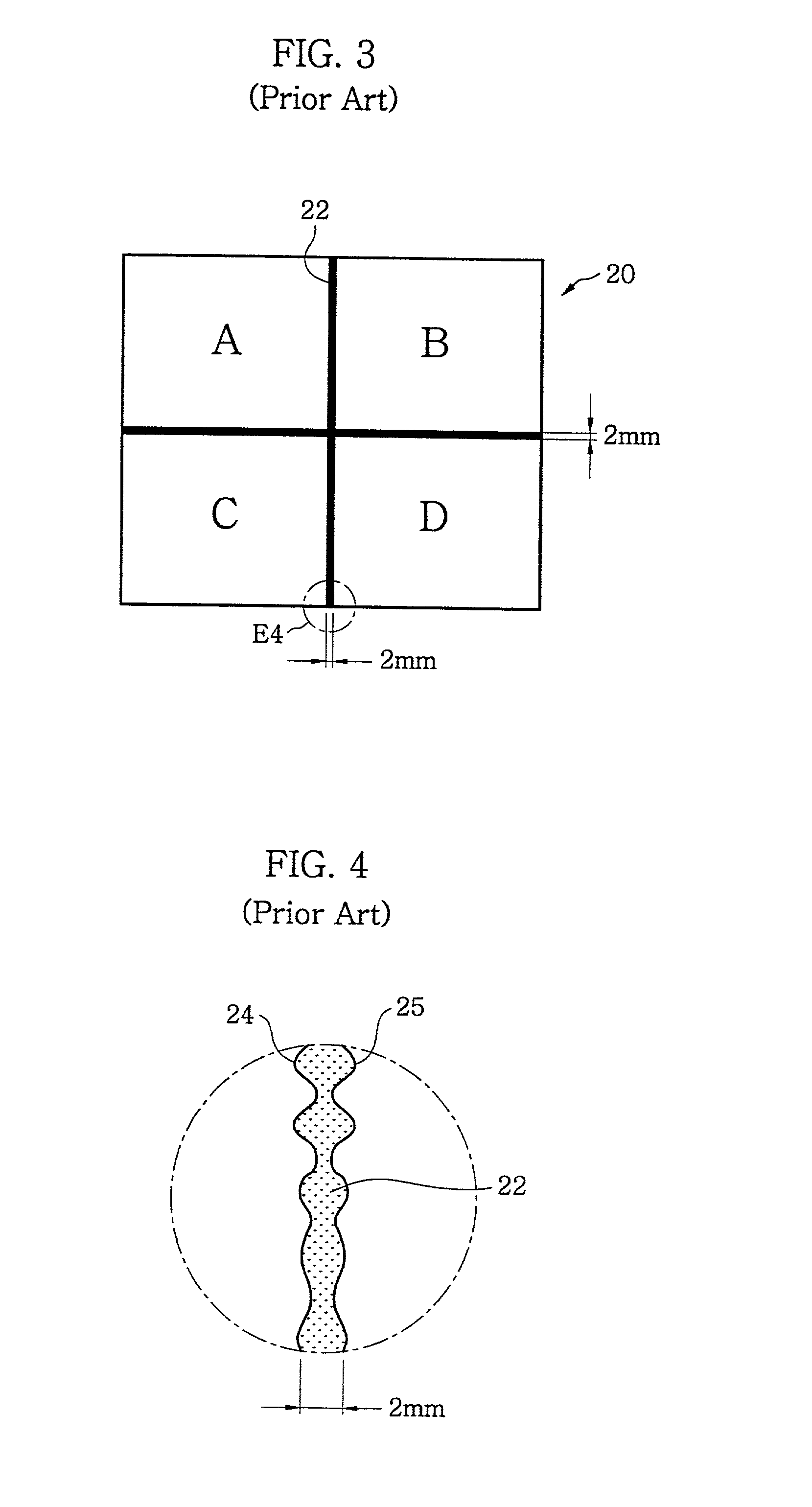Laser cutting apparatus and method
a laser cutting and laser beam technology, applied in the direction of soldering apparatus, instruments, auxiliary welding devices, etc., can solve the problems of cutting out an active area, affecting the cutting efficiency of conventional cutting apparatus using laser beams, and difficult to narrow seam lines 22
- Summary
- Abstract
- Description
- Claims
- Application Information
AI Technical Summary
Problems solved by technology
Method used
Image
Examples
embodiment 1
[0170] As described previously, the laser cutter according to the present invention substantially prevents the object from being cut erroneously deviating from the marked cutting line by forming a pre-cut groove at the start edge and the end edge of the cutting line before irradiating the laser beam along the cutting line.
[0171] Also, in case that cutting lines are normal to each other, the laser cutter of the present invention can be used by forming a pre-cut groove at the starting edge of the second cutting line.
[0172] In addition, exact control of irradiation timing of laser beam and the position of pre-cut grooves by the position sensor prevents waste of electric power and coolant.
[0173] Moreover, since it is possible to grind the upper edge of the cut face using laser beam, the static electricity can be prevented during the grinding step.
[0174] In addition, it is possible to round the upper edge of the cut face without an additional grinding step using an elliptic laser beam wi...
first embodiment
[0177] Here, since constitutions and operations of moving unit 280, laser unit 220, cooling unit 240, and pre-scriber 260 are almost the same as those of the first embodiment, such descriptions are not repeated.
[0178] The coolant inhaler 250 includes an inhaling pipe 254 disposed at the back of a coolant spraying unit 244 with respect to the traveling direction of the laser unit 220 along Y-axis moving plate 282, and a pump 252. The inhaling pipe 254 inhales coolant sprayed onto the cutting line 120 and the pump 252 vacuums the inhaling pipe 254.
[0179] Preferably, one end of the inhaling pipe 254 is bent toward the coolant spraying unit 244 such that the inhaling pipe 254 effectively inhales the sprayed coolant.
[0180] Here, the inhaling power of the pump 252 should be lower than the spraying pressure of the coolant 246, in order to prevent the coolant inhaling pipe 252 from inhaling coolant before it reaches the cutting line headed by the laser beam.
[0181] A method of cutting the gl...
second embodiment
[0196] Thus, according to the present invention, the coolant inhaler is disposed at the back of the cooling unit and inhales the coolant after cooling of the heated scriber line of the substrate, thereby preventing the scattering of the laser beam to improve the cutting power.
[0197] In addition, the laser cutter according to the second embodiment of the present invention prevents the contamination of the substrate and also prevents the liquid crystal inlet hole from being plugged up due to the remaining coolant.
[0198] Meanwhile, although the second embodiment shows and describes that the laser cutter including the laser unit, prescriber, cooling unit, and coolant inhaler moves along the scriber line, it is possible that the cutting process is performed by moving the substrate with the laser cutter fixed.
[0199] In the cooling unit applied to the laser cutters of the first and second embodiments, when the temperature of coolant gas around the scribe line 120 is lower than that of cool...
PUM
| Property | Measurement | Unit |
|---|---|---|
| Fraction | aaaaa | aaaaa |
| Diameter | aaaaa | aaaaa |
| Wavelength | aaaaa | aaaaa |
Abstract
Description
Claims
Application Information
 Login to View More
Login to View More - R&D
- Intellectual Property
- Life Sciences
- Materials
- Tech Scout
- Unparalleled Data Quality
- Higher Quality Content
- 60% Fewer Hallucinations
Browse by: Latest US Patents, China's latest patents, Technical Efficacy Thesaurus, Application Domain, Technology Topic, Popular Technical Reports.
© 2025 PatSnap. All rights reserved.Legal|Privacy policy|Modern Slavery Act Transparency Statement|Sitemap|About US| Contact US: help@patsnap.com



